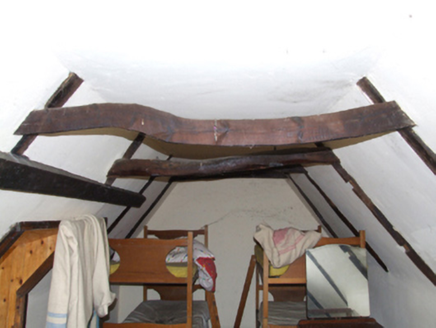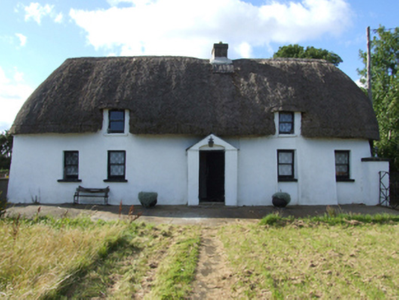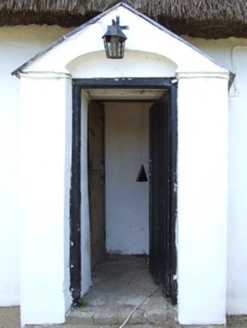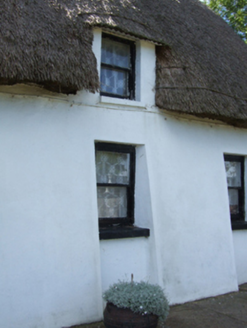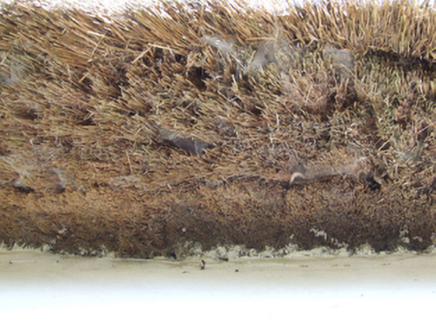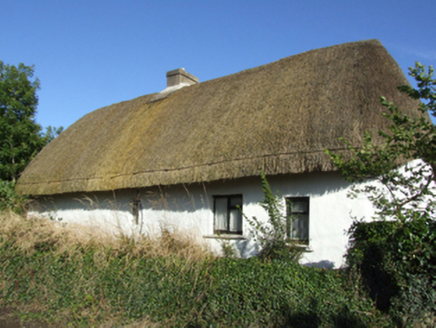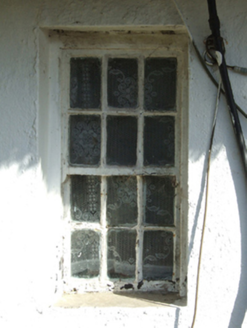Survey Data
Reg No
15702725
Rating
Regional
Categories of Special Interest
Architectural, Social
Original Use
Farm house
Date
1700 - 1840
Coordinates
309961, 137172
Date Recorded
19/08/2007
Date Updated
--/--/--
Description
Detached three-bay single-storey lobby entry thatched farmhouse with dormer attic, extant 1840, on a T-shaped plan centred on single-bay single-storey gabled windbreak. Reroofed, ----. Now disused. Replacement hipped oat thatch roof on collared timber construction overhanging flat corrugated-iron roofs to window openings to dormer attic with chicken wire-covered paired exposed hazel stretchers to ridge having exposed scallops, cement rendered off-central chimney stack having capping supporting yellow terracotta pot, and exposed hazel stretchers to eaves having exposed scallops. Limewashed rendered battered walls. Square-headed central door opening in camber- or segmental-headed recess with concrete step threshold, and concealed dressings framing timber boarded door. Square-headed flanking window openings with concrete or rendered sills, and concealed dressings framing one-over-one timber sash windows having part exposed sash boxes with one six-over-six timber sash window to rear (west) elevation having part exposed sash box. Interior including (ground floor): central lobby with triangular "spy hole". Set in landscaped grounds on a corner site with rear (west) elevation fronting on to road.
Appraisal
A farmhouse identified as an integral component of the vernacular heritage of County Wexford by such attributes as the rectilinear lobby entry plan form centred on a characteristic windbreak; the construction in unrefined local materials displaying a pronounced battered silhouette with sections of "daub" or mud suggested by an entry in the "House and Building Return" Form of the National Census (NA 1901; NA 1911); the somewhat disproportionate bias of solid to void in the massing; and the high pitched roof showing a replenished oat thatch finish: meanwhile, such traits as the symmetrical or near-symmetrical pattern of the openings convey aspirations to "gentrified" architecture (cf. ----). Having been well maintained, the elementary form and massing survive intact together with substantial quantities of the original fabric, both to the exterior and to the interior, thus upholding the character or integrity of a farmhouse making a pleasing visual statement in a sylvan street scene.
